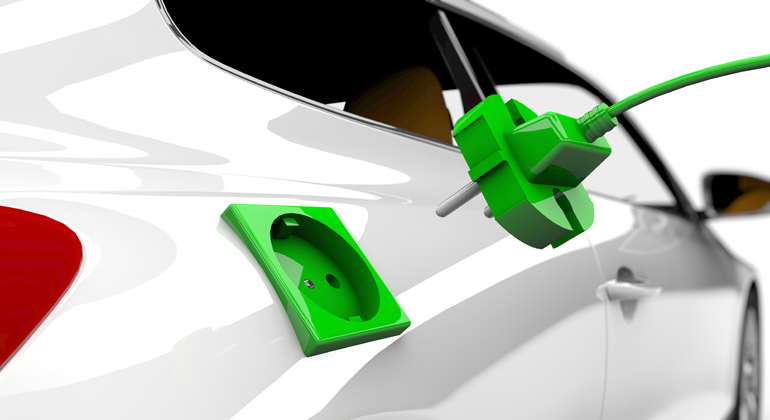It’s in the air – battery research takes up the charge
Motorists going slow on the uptake of electric vehicles cite anxiety about the distance they can travel between charges as a key concern. Researchers at UTS are working on battery technology to help match the driving range of an EV with a petrol-fuelled car.
Clean energy researchers at the University of Technology Sydney (UTS) have designed a molecule to boost the performance of lithium-oxygen batteries to give electric vehicles the same driving range as petrol-fuelled cars.
Lithium-oxygen batteries employ cutting-edge technology aimed to deliver maximum energy density through breathing air to generate electricity.
To date, however, they have been beset by challenges, including low discharge capacity, poor energy efficiency and severe parasitic reactions. This new all-in-one molecule can simultaneously tackle those issues.
The capacity of next-generation lithium-oxygen batteries to extend the driving range between charges would be a significant leap forward for the electric vehicle industry.
Professor Guoxiu Wang
UTS Professor Guoxiu Wang, who led the research team in the UTS Centre for Clean Energy Technology, said the exciting discovery resolved several existing obstacles and created the possibility of developing a long-life, energy-dense lithium-oxygen battery that was highly efficient.
“Batteries are changing fundamentally,” Professor Wang said. “They will facilitate the transition towards a climate-neutral society and open up new industry opportunities for a country like Australia that is rich in the fundamental elements for building batteries.
“They will also help utilities improve power quality and reliability and help governments around the world achieve net zero carbon emissions.”
Professor Wang said his team’s study details an Li-O2 battery operated via a new quenching/mediating mechanism that relies on the direct chemical reactions between a versatile molecule and superoxide radical/Li2O2. The battery exhibits a 46-fold increase in discharge capacity, a low charge overpotential of 0.7 V, and an ultralong cycle life greater than 1400 cycles.
“Our rationally designed and synthesised PDI-TEMPO molecule opens a new avenue for developing high-performance Li-O2 batteries,” Professor Wang said.
“The capacity of next-generation lithium-oxygen batteries to extend the driving range between charges would be a significant leap forward for the electric vehicle industry.
“We are confident our all-in-one molecule can dramatically improve the performances of lithium-oxygen batteries and enable new generation lithium-oxygen batteries to be practical.”
Professor Wang said the “outstanding outcome” was the result of more than three years of hard work, in particular by his colleague Dr Jinqiang Zhang, now at the University of Toronto.
The research is published in the journal Science Advances.








